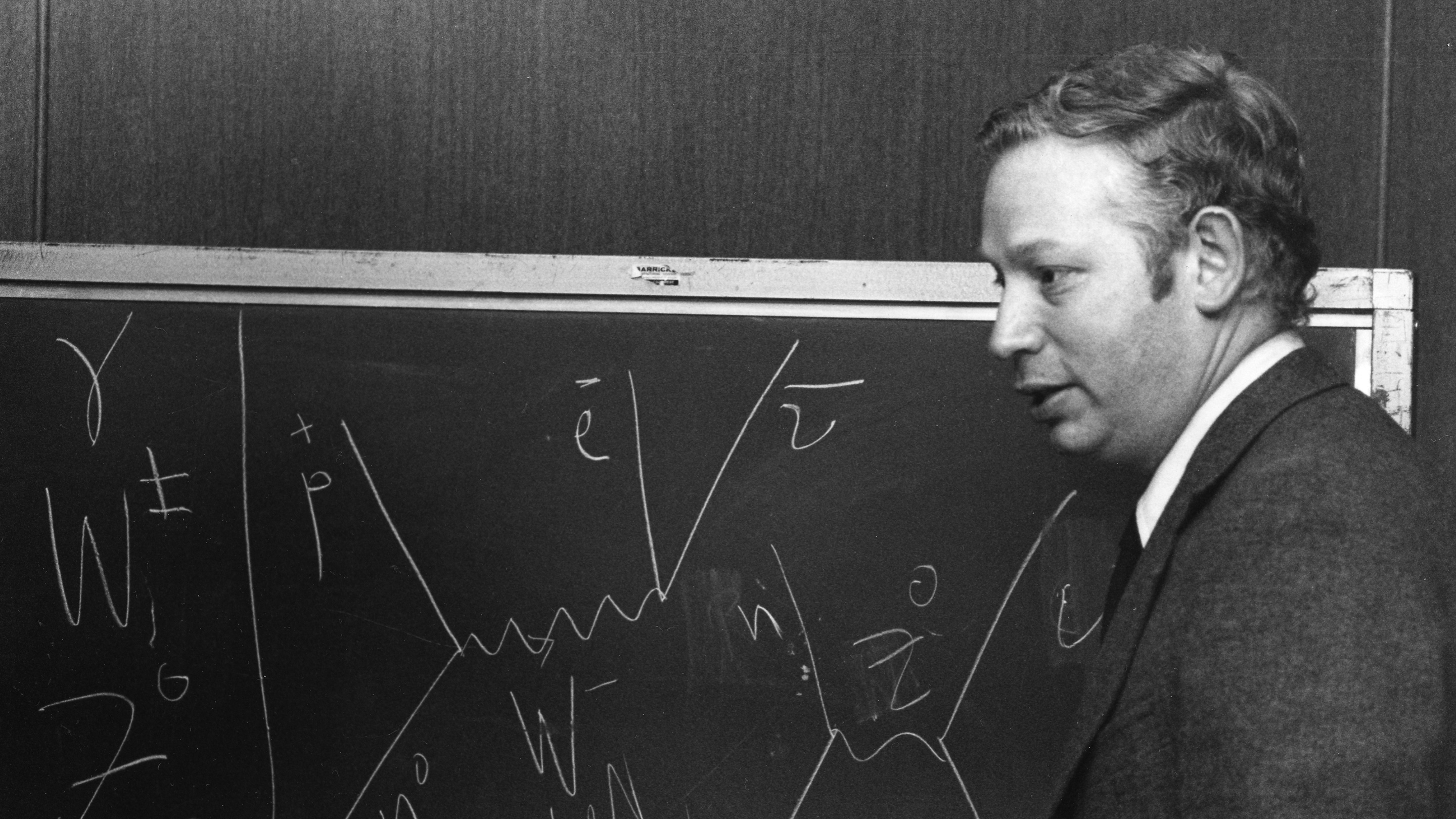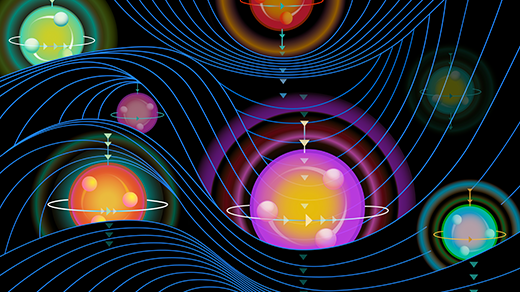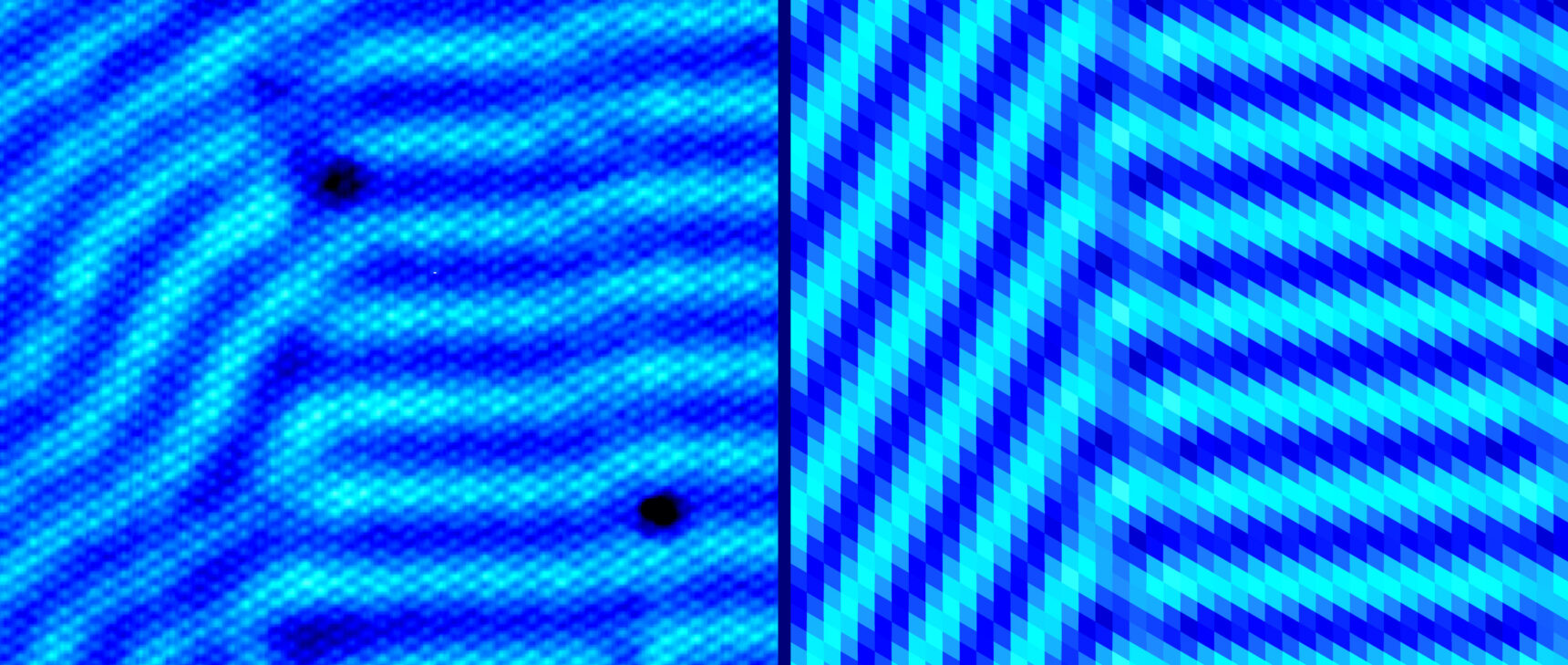How Steven Weinberg Transformed Physics and Physicists

Steven Weinberg at the American Physical Society Meeting in 1977. His work in particle physics redefined our understanding of the universe.
AIP Emilio Segrè Visual Archives, Weber Collection
Introduction
Steven Weinberg, who died on July 23, towered over theoretical physics in the second half of the 20th century. He strongly believed that, armed only with the fundamental principles of relativity and quantum mechanics, the theoretical physicist can examine all phenomena in the universe — from the smallest to the largest scales. His work transformed our understanding of every aspect of fundamental physics in startlingly deep and original ways.
Weinberg was a master of quantum field theory, a branch of physics born from applying the rules of quantum mechanics to the electromagnetic field, which sees a particle — the photon —as a “quantized” excitation of the field. He was instrumental in propelling quantum field theory to astonishing new heights in the description of nature.
The themes of unification and symmetry drove all of Weinberg’s work and led to his famous breakthrough on electroweak unification, which revealed a hidden unity between two of the universe’s four fundamental forces. At first sight, the electromagnetic and weak interactions seem utterly different: We see electromagnetic waves as light in everyday life, while the weak force — responsible for radioactivity — operates on subnuclear scales. Weinberg realized that at very high energies, the two forces should be intertwined, described by what’s known as Yang-Mills theory, whose equations have a special property called gauge symmetry. But this essential commonality is hidden by the so-called Higgs mechanism, which generates masses for elementary particles such as the electron and the W and Z particles (which mediate short-range weak interactions), all the while leaving the long-range photon massless. The model he proposed in 1967 for realizing this vision made many detailed predictions and has been triumphantly confirmed by experiments beginning in the 1970s and ’80s, capped off by the 2012 discovery of the Higgs particle. Weinberg shared the 1979 Nobel Prize in Physics with Sheldon Glashow and Abdus Salam for this work, a pillar of the Standard Model of particle physics.
But ironically, this effort was in many ways uncharacteristic of Weinberg’s oeuvre, as he tended to be more concerned with general properties of the laws of nature rather than specific models. He had an unmistakable style, beginning any discussion from general principles and developing a systematic chain of arguments, one step following another with seeming inevitability. While he loved mathematics, he focused squarely on using it as a tool to describe the world. Weinberg asked simple and deep questions. Why is nature described by quantum field theory? Why are there so few possibilities for describing the properties of elementary particles and their interactions?
In this vein, Weinberg reimagined quantum field theory from a different perspective, asserting the primacy of special relativity, quantum mechanics and the notion of particles as a starting point. In his early work he studied long-range forces, such as electromagnetism and gravity, mediated by massless particles, the photon and graviton. Like all elementary particles, these have an intrinsic angular momentum, or “spin,” that comes in quantized units: Photons have spin 1 and gravitons spin 2. Weinberg showed that special relativity and quantum mechanics put striking restrictions on the interactions of massless particles. Spin 1 particles must be described by theories whose equations have gauge symmetry, while spin 2 particles must have the properties of the graviton, with a universal coupling strength to all particles. This provided a deeper derivation of the equivalence principle assumed by Albert Einstein as his starting point for developing general relativity. No other possibilities are consistent — the long-range forces we see in nature exhaust what is permitted by special relativity and quantum mechanics.
Another landmark contribution, which transformed our understanding of why quantum field theory describes the world, was his introduction of the notion of “effective field theories.” Weinberg argued that the principles of quantum mechanics and of locality — the idea that experiments performed sufficiently far apart in space-time should not affect each other — guarantee that the interactions of particles accessible at some energy scale must be described by a simple “effective” quantum field theory that involves only these particles. The dominant interactions between the particles are given by a finite number of interaction strengths, while the fingerprints of unknown physics at higher energies are systematically encoded in an infinite set of ever tinier interactions. (The ideas of effective field theory were also developed around the same time, from a complementary perspective, by Ken Wilson.)
Above all, Weinberg was a great unifier. He disliked the “Einsteinian” view of gravity as the curvature of space-time — which gives gravity a privileged position in defining the arena where all other phenomena operate — feeling that this erected an artificial barrier preventing researchers from seeing deeper connections between gravity and the rest of physics. This led him to formulate general relativity using the methods of particle physics, in the first of his many tour de force textbooks, Gravitation and Cosmology. He also realized that the seemingly disparate fields of particle physics and cosmology had to be united, since high-energy collisions between elementary particles were ubiquitous in the hot, dense conditions of the early universe shortly after the Big Bang, and he provided the theoretical tools needed to usher in a golden age of explorations in early-universe cosmology.
Weinberg’s fascination with cosmology led him to ponder the infamous cosmological constant problem. Violent quantum mechanical fluctuations, present everywhere in the vacuum, should endow empty space with an enormous energy density and cause space-time to be highly curved, in stark disagreement with the large, nearly flat universe we observe. Why is this vacuum energy, or “cosmological constant,” so small? In 1987, Weinberg proposed a radical approach to this problem using a minimal version of the “anthropic principle.” He reasoned that perhaps the vacuum energy could take on different values, and that if it were bigger than a specific minute size, an accelerated expansion of the universe would rip apart galaxies before they had a chance to form, leading to a structureless, empty universe — one devoid of people wondering about the size of the cosmological constant. Weinberg argued that this predicted a tiny but nonzero size for the vacuum energy. In 1998, astronomers discovered that the expansion of the universe is accelerating, with the simplest explanation being the presence of vacuum energy at just about the size suggested by Weinberg’s argument. Weinberg largely avoided the many boring diatribes surrounding the anthropic principle that followed, contenting himself with having pragmatically used anthropic reasoning to make a correct prediction about nature.
In addition to being one of the greatest theorists of his era, Weinberg was also the preeminent public intellectual of fundamental physics. His first popular book — The First Three Minutes, about cosmology and the Big Bang — became an instant classic and proved profoundly influential for both the general public and professional researchers. Many physicists, including me, started learning cosmology from this book. In Dreams of a Final Theory, Weinberg eloquently expounded on the notion of “beauty” in physics, stressing that it’s not a capricious aesthetic judgement, but a reflection of the incredible rigidity of physical laws and the ever greater sense of inevitability associated with the way they explain the world.
Ever since my days as a graduate student, Weinberg was the intellectual hero of my life in physics. His textbooks on quantum field theory were a godsend, and his perspectives on the inevitability of quantum field theory and on effective field theory formed the foundation of my picture of the world. I worked through his books diligently, carrying them around with me everywhere I went. Weinberg used overly detailed notation that made for crowded equations, so a casual reading of his text was impossible — all for the best, since being forced to translate his insights into my own notation really made them stick. My years of transcribing Weinberg had an interesting side effect: To this day, when I think of some fundamental aspect of field theory, I see the words from his books in my mind’s eye and hear his voice in my head. I also vividly remember reading his paper on the anthropic explanation for the cosmological constant, which had me walking around in a daze for a month. It took me many years to come to terms with this point of view, and eventually even to embrace it in my own research.
I first met Weinberg in person in the early 2000s. Although he had been kind and encouraging to me about my work, I became uncharacteristically bashful in his presence. In the midst of a technical discussion, I uttered the phrase “as you taught us” many more times than I can remember. I never entirely shook this feeling of reverence around him.
Discerning the fundamental simplicity behind nature’s inner workings is the highest goal a theoretical physicist can aspire to. No one in the past 60 years did this better than Weinberg. He was also a profound and humane thinker, who taught us all how to seek out that which, as he put it, “lifts human life a little above the level of farce and gives it some of the grace of tragedy.” His example will forever serve as an inspiration, and as a model for a life deeply lived.



